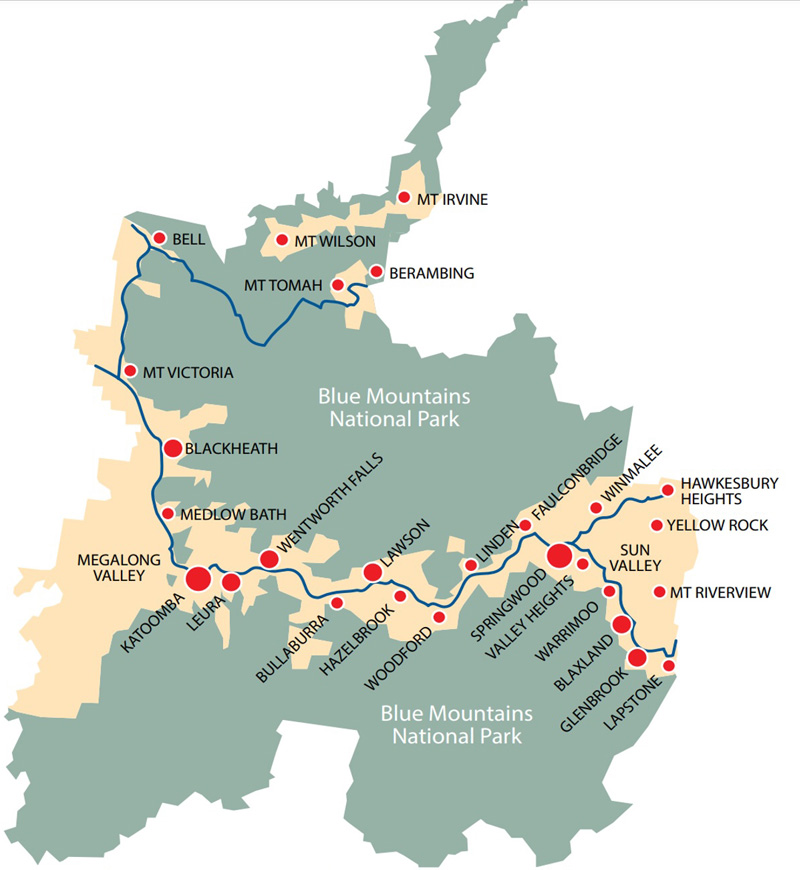This report presents the findings from the Creative, Community, Wellbeing and Resilience Hub (the Hub) project, a disaster preparation, recovery and resilience initiative developed and run by Blackheath Area Neighbourhood Centre in Blackheath, New South Wales. The aim of the Hub is to combine creative, practical and psychosocial support to develop an integrated, place-based, whole-of-community disaster recovery and preparation model. The Hub project delivered a program of events, workshops and activities on social connectedness, practical support, education (including property preparation before bushfire seasons) and psychosocial and physical wellbeing. The program ran from January 2022 to June 2023 after an initial consultation between June and December 2022. The program was developed in response to recent adverse events, particularly the cumulative toll of numerous natural disasters and the COVID-19 pandemic, and to prepare for future ones. The report found that participants in the Hub program overwhelmingly benefited from participating in the Hub with demonstrable improvements in community connectedness, experiences of belonging, participation in community events and resilience. The Hub is a model for effective community sector organisations disaster preparation, recovery and resilience work. The Hub project also revealed the work these organisations are already doing in emergency and disaster preparation, recovery and resilience as well as their effectiveness and the untapped potential of their long-term funding.
Background
The Upper Blue Mountains area1 in New South Wales has experienced, like so many other places in the state and across Australia, a series of ‘cascading disasters’ (Massola et al. 2022:2). The Hub was initially developed in response to the 2019–20 summer season that had included bushfires, storms and rain events. This followed a previous severe fire season in 2013 that caused significant property loss in Mount Victoria. The Upper Blue Mountains experienced significant bushfires, particularly from the mega-blaze that encompassed the Gospers Mountain and Grose Valley fires. The area was declared a disaster area and suffered loss of properties, wildlife, infrastructure, environmental destruction and people experienced physical and mental health effects. The danger to towns and lives peaked in December 2019 and January 2020. The mega-blaze was eventually extinguished by a storm and rain event in February 2020.
In developing and implementing the Hub, the initiative also responded to the COVID-19 pandemic. Stay-at-home orders were implemented in the Blue Mountains local government area (Figure 1) from 23 March to 1 May 2020 and again from 26 June to 11 October 2021. These orders placed significant restrictions on people’s activities and social distancing requirements continued beyond these periods. The rain events were significant, with the Blue Mountains being declared a disaster area in February 2020, March 2021, November 2021, February/March 2022 and June/July 2022 (NSW Government 2023).
Figure 1: Blue Mountains local government area.
Source: Blue Mountains City Council (2022)
One of the most significant outcomes of these cascading disasters was the community response to the 2019–20 summer season. These events brought people together in support of each other, their community and the Blue Mountains environment. However, this was most immediately interrupted by the pandemic, which isolated people from one another and their support systems.
These experiences affected the Upper Blue Mountains community’s connection and wellbeing. This reflects a national trend, where a national survey (Climate Council 2023) found 80% of respondents had experienced some form of disaster since 2019 and, of those affected, more than 51% stated that their mental health had been ‘somewhat impacted’, with one-fifth of that group stating there had been a ‘major or moderate impact’ (Climate Council 2023:6).
The Hub project
The development of the Hub (Figure 2) was a response to these experiences and a way to assist communities to develop, maintain and strengthen resilience for future challenges. The project stemmed from the Blackheath Area Neighbourhood Centre’s long-term involvement in community connectedness, including disaster preparation, recovery and resilience. Much was learnt from the experiences during and after the 2013 bushfires in Winmalee and Mount Victoria.
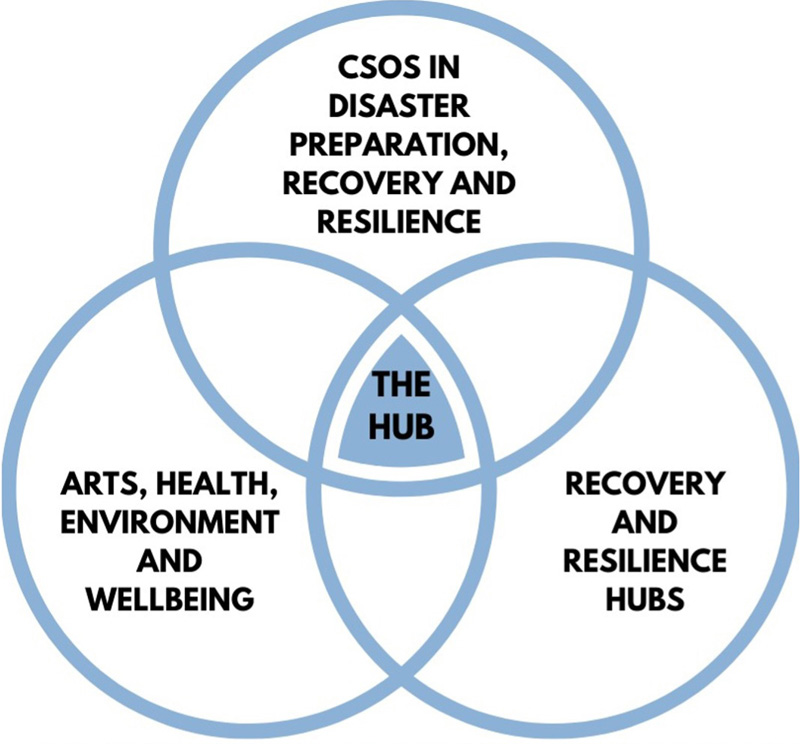
Figure 2: The policy, research and practice areas informing the Hub model.
The project was a consultative program that delivered community-driven events as requested by the community to meet specific needs. The Hub was developed using a strengths-based and consultative framework to engage the community to maximise their experiences, knowledge and capacities to strengthen and support existing networks and resources. Of particular importance was that the project was localised and contextually specific to respond to the needs of the Upper Mountains community, including age distribution, economic circumstances, mental wellbeing, social influences and geographical isolation. As such, the project was developed in consultation with the community to ensure the Hub was fit-for-purpose and accessible.
The Hub project consisted of 4 streams of activities: creative activities, community activities, wellbeing activities and resilience activities. Overall, 2,586 people attended 217 Hub events, constituting over 515 hours over 18 months. Hub activities were delivered by the Blackheath Area Neighbourhood Centre or delivered by the centre in partnership with other individuals, organisations and volunteers.
Hub activities were tailored to cohorts of adults, families, young people, seniors and people with disability. The activities catered to interests such as art therapy and play, animation and film, writing and reading, permaculture, beekeeping, Indigenous culture and crafts and economic and environment workshops. There were some activities explicitly focused on disaster resilience, such as post-traumatic growth and bushfire preparation workshops as well as art-based creative psycho-education groups for children and youth.
The Hub worked in partnership with other local community organisations to deliver projects such as the Blackheath Mural, art and music events, film and cultural festivals, information sharing events and memorial activities.
An important aspect of the Hub has been to use community partnerships in the development and delivery of Hub activities. Benefits of the partnership approach include:
- building on and extending existing relationships
- creating new partnerships with the longer potential for ongoing collaboration
- preventing the duplication of programs that may reduce participant attendance and/or competition by providers
- ensuring that funding is used to the utmost extent
- providing an opportunity for more dynamic program creation
- connecting people to other services and networks in the community.
This approach acknowledges the importance of past and current partnerships and builds on new partnerships to facilitate the future sustainability when project funding ends.
Research
Simultaneous to the planning and provision of the Hub was the research project. The research was a mixed-methods study using surveys with closed and open-ended questions and semi-structured interviews over the 18 months of the Hub program. Participants completed pre-activity surveys (n=113) and post-activity surveys (n=2792) and could indicate in the post-activity survey if they were interested in participating in a follow-up interview. Thirteen Hub attendees participated in follow-up interviews, as well as 2 Hub facilitators, to capture the experience from different perspectives and observations from the sessions. The research team undertook basic analysis of quantitative trends and thematic data analysis of qualitative data (Braun and Clarke 2006:79) using nVivo software. Open-ended questions were coded and analysed through SPSS software. The research project received ethics approval from the Nepean Blue Mountains Local Health District Ethics Committee (2022/ETH00045).
Results
Connection, belonging and participation
Hub participation had a significant effect on participants’ feelings of connection. Figure 3 shows the responses to ‘strongly disagree’ or ‘somewhat disagree’ with the statement, ‘I feel connected to community’, dropped from 16% of all participants to 69% (-10%). Those who felt ‘neutral’ about the statement dropped from 18% to 6% (-12%) and those who ‘somewhat agreed’ or ‘strongly agreed’ increased from 66% to 88% (+22%). The increase was all in the ‘strongly agree’ column.
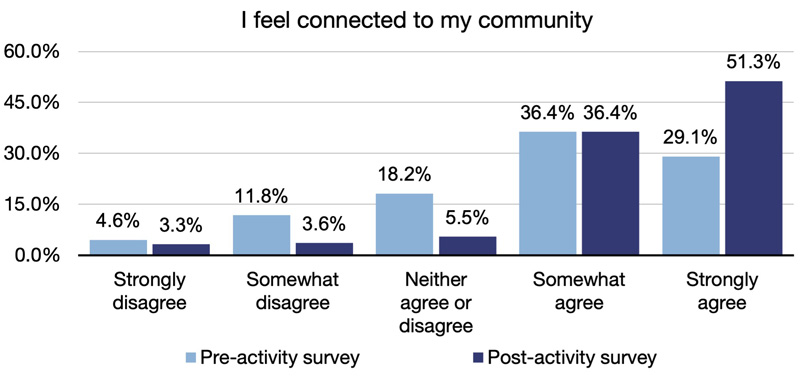
Figure 3: Responses to the statement ‘I feel connected to my community’.
Hub participation had a significant effect on participants’ feelings of belonging. Figure 4 shows that the people answering ‘strongly disagree’ or ‘somewhat disagree’ that they felt like they belonged dropped from 21% of all participants to 10% (-11%). Those who felt ‘neutral’ about the statement dropped from 13% to 7% (-6%) and those who ‘somewhat agreed’ or ‘strongly agreed’ increased from 66% to 82% (+16%).
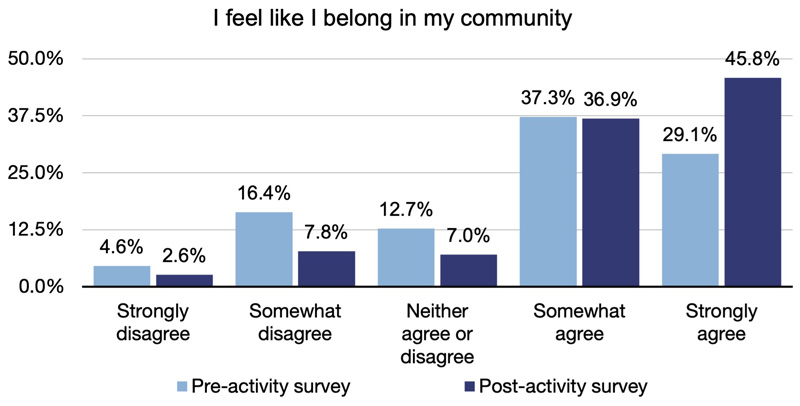
Figure 4: Responses to the statement ‘I feel like I belong in my community’.
Hub participation had a significant effect on respondents’ experience of active participation in the community. Figure 5 shows that the people answering ‘strongly disagree’ or ‘somewhat disagree’ that they actively participated dropped from 23% of all participants to 10% (-13%). Contrary to the previous answers, those who felt ‘neutral ‘about the statement increased from 10.9% to 11.3% (+0.4%) and those who ‘somewhat agreed’ or ‘strongly agreed’ increased from 66% to 79% (+13%). The increase in affirmative statements was overwhelmingly in the ‘strongly agree’ column.
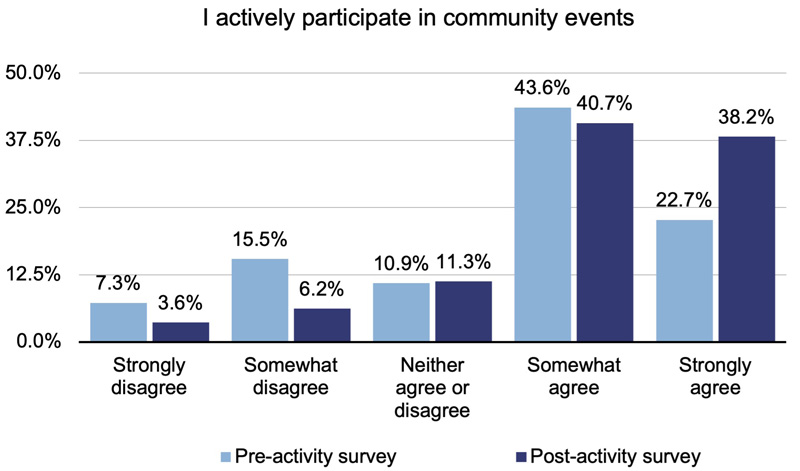
Figure 5: Responses to the statement ‘I actively participate in community events’.
Resilience
Hub participation had a significant effect on participants’ feelings that they could cope with emergencies. Figure 6 shows that the people answering ‘strongly disagree’ or ‘somewhat disagree’ that they could cope dropped from 19% of all participants to 7% (-11%). Those who responded neutrally dropped from 13% to 9% (-4%) and those who ‘somewhat agreed’ or ‘strongly agreed’ increased from 68% to 84% (+16%).
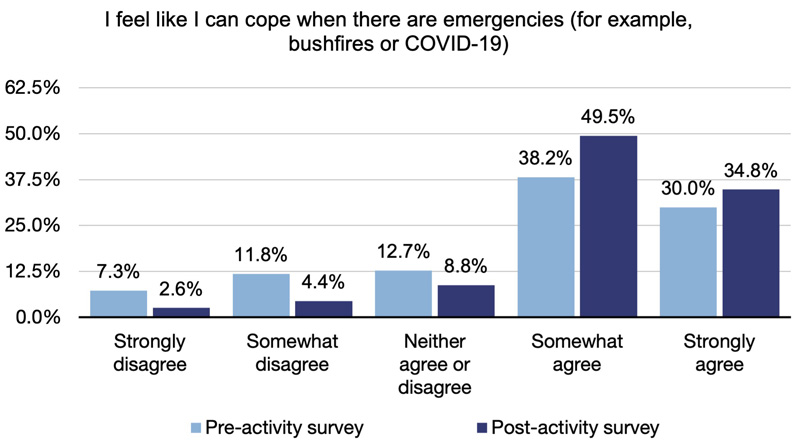
Figure 6: Responses to the statement ‘I feel like I can cope when there are emergencies’.
Hub participation had a significant effect on participants’ feelings that they could adjust to changing circumstances. Figure 7 shows that the people answering ‘strongly disagree’ or ‘somewhat disagree‘ that they could cope dropped from 17% of all participants to 6% (-11%). Those who responded neutrally dropped from 9% to 6% (-3%) and those who ‘somewhat agreed’ or ‘strongly agreed’ increased from 74% to 88% (+14%). There were increases in both the ‘somewhat agree’ and ‘strongly agree’ columns.
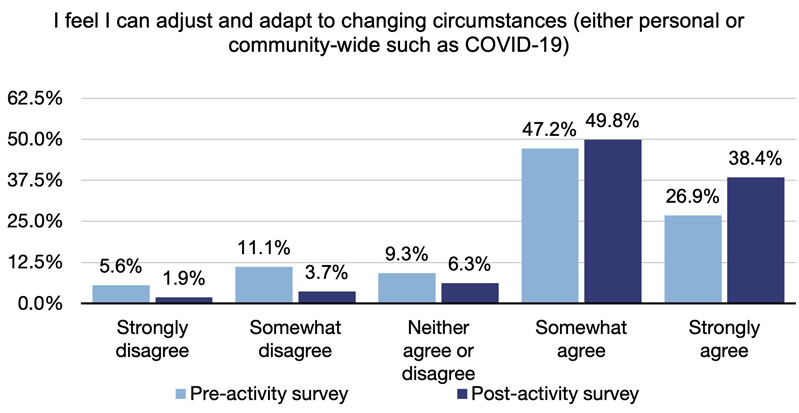
Figure 7: Responses to the statement ‘I feel like I can adjust and adapt to changing circumstances’.
Enjoyment
Participants overwhelmingly enjoyed attending their Hub activity with 99% answering a ‘yes’ that they had enjoyed the Hub. Reasons cited were that they learnt from the activity, they enjoyed the connection with others, the activities improved their wellbeing, it was fun and/or creative and/or useful. Open-ended responses were effusive with participants stating they ‘absolutely loved the time spent in these pursuits’, that they ‘Love all of it. Love learning new techniques’ and one participant stated they ‘would be lost without this Monday group. The social aspect is so good for my mental health and the art helps with my self-esteem’.
In addition to enjoying the activities, participants found them useful and educational. A total of 94% of respondents found Hub activities either ‘very’ or ‘extremely’ useful and 89% of respondents either ‘somewhat agreed’ or ‘strongly agreed’ they had learnt or developed a skill as a result on their involvement. A vast majority of respondents (98%) stated they would recommend the Hub activity they attended to another person.
Qualitative participant reflections
The research generated qualitative data detailing participants’ experiences of increased connection, resilience, learning as well as discussing the affective and emotional dimensions of attending the Hub. Full details are provided in the project’s final report3 but, in summary, a vast majority of participants described the Hub as making a ‘huge difference’ to their lives and as an experience of ‘community-building’, community connectedness and reductions in social isolation. For some participants, friendships established at the Hub extended into other areas of their lives. Several participants linked the increased connectedness with improved wellbeing outcomes and the Hub was ‘vital to this process’. Participants also linked their experience at the Hub as assisting with challenges ranging from recovery from serious health conditions through to teaching their children how to problem solve, including managing the frustration of problem-solving processes. Participants also identified the Hub as assisting in developing resilience on a community level.
Overwhelmingly, participants felt like they had learnt something from attending the Hub, including learning about others, learning new skills and learning practical information about disaster management. Several participants mentioned using their increased knowledge in their everyday lives. One of the strongest findings was that participants really enjoyed themselves, often stating they ‘love’ their Hub experiences. The Hub ‘added something to our lives that was really valuable’ with one participant asserting that ‘I would go if you ran it 10 times. I would go again’. A participant stated they ‘raved on’ about the Hub to their friends and family, while another stated their weekly workshop was ‘a pretty special group’.
What worked and what didn’t?
An aspect of this research project was to ascertain feedback from participants: what did they feel worked in the Hub model and what didn’t? There is further discussion of the feedback from participants in the extended report. The major finding, however, is the negative effect of funding arrangements and terms. Participants had a lot of feedback on their perspectives of what worked about the Hub, including the strength of the facilitators, the range of activities, feelings of safety, accessibility, especially in free access to activities. All the reflections on what didn’t work were tied to funding: participants wanted to extend their Hub experience, including more allotment of workshop places, longer workshops and–particularly–the continuance of the Hub beyond funding cycles and into the future. Some participants reflected passionately about their desire and, to some extent, need for the Hub activities, particularly the weekly events, like art therapy and the writing group, to continue. ‘It just so important to keep these classes’ one participant stated, while another mentioned her concern for ‘ongoing connectedness’ in light of building resilience.
Future directions
The effectiveness of the Hub is demonstrated in the data. There was significant support from the majority of research participants that the Hub continue. This reflects the success of the Hub and its positive influence on community cohesion and connectedness amid the ongoing and urgent need for disaster preparation, recovery and resilience. Investigating opportunities for further funding and use of community service organisations to build resilience is a productive avenue to pursue.
The data demonstrates that the Hub is an effective disaster preparation, recovery and resilience model with wide applicability to other communities. In particular, the Hub draws on the strengths of a place-based organisation to build capacity and address needs during ‘business-as-usual’ times and quickly move into ‘surge capacity’ when disasters occur. Further funding of Hub projects for other community service organisations would enable a faster and effective response to disasters and ensure that these organisations have the required financial and other assets available at short notice.
The Hub model is an innovative integration of psychosocial activities and practical supports to address disaster preparation, recovery and resilience. The effectiveness of this approach is evident in the improvements across a wide spectrum of outcomes, from the tangibility of increased disaster preparedness through to the outcomes of increased experiences of belonging. The data reveal that an integrated model has a positive effect across a range of aims and it is worthy of further investigation as to whether an integrated model that includes a focus on psychosocial dimensions is more effective in addressing practical supports than practical support provision alone, as is the usual model of resilience hubs.



